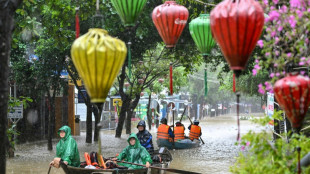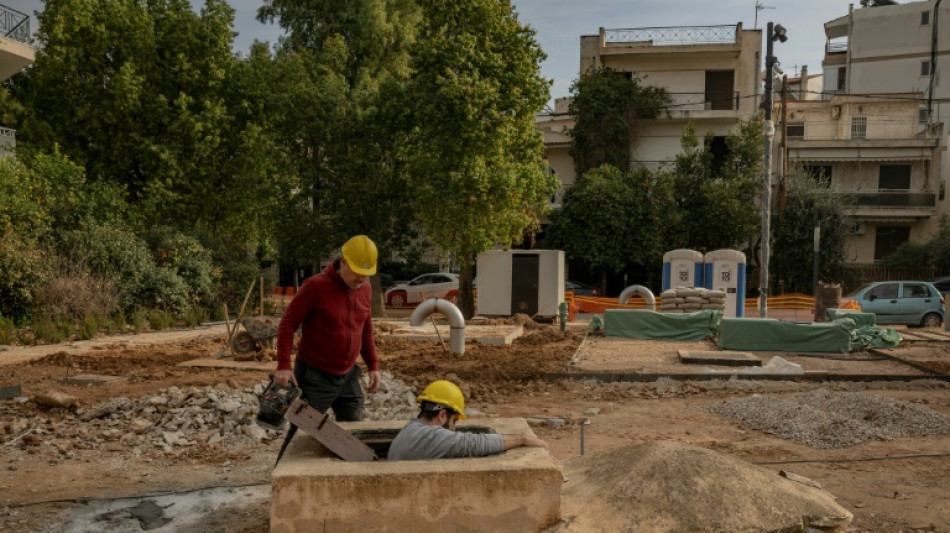
-
 Profits dip at ExxonMobil, Chevron on lower crude prices
Profits dip at ExxonMobil, Chevron on lower crude prices
-
Ashraf and Mirza skittle South Africa as Pakistan win 2nd T20

-
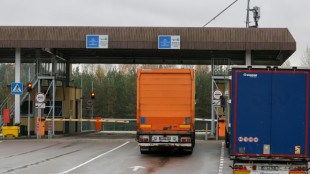 2,000 trucks stuck in Belarus after Lithuania closes border: association
2,000 trucks stuck in Belarus after Lithuania closes border: association
-
French lawmakers reject wealth tax proposal in budget debate

-
 Premier League blames European expansion for lack of Boxing Day games
Premier League blames European expansion for lack of Boxing Day games
-
Bublik sets up Auger-Aliassime semi-final at Paris Masters

-
 World's most expensive coffee goes on sale in Dubai at $1,000 a cup
World's most expensive coffee goes on sale in Dubai at $1,000 a cup
-
Trump stirs global tensions, confusion with nuclear test order

-
 Panic across US as health insurance costs set to surge
Panic across US as health insurance costs set to surge
-
Court eases ban on Russian lugers but Olympic hopes on thin ice

-
 England captain Itoje targets Autumn Nations clean sweep
England captain Itoje targets Autumn Nations clean sweep
-
Calmer Sabalenka sets sights on WTA Finals crown

-
 Spurs boosted by Romero return for Chelsea clash
Spurs boosted by Romero return for Chelsea clash
-
Sudan's RSF claims arrests as UN warns of 'horrendous' atrocities in Darfur

-
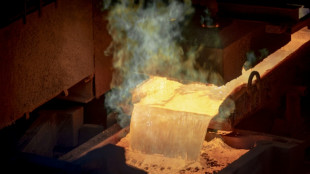 US says 'non-market' tactics needed to counter China's rare earth dominance
US says 'non-market' tactics needed to counter China's rare earth dominance
-
China sends youngest astronaut, mice to space station

-
 From adored prince to outcast, Andrew's years-long fall from grace
From adored prince to outcast, Andrew's years-long fall from grace
-
Rodri return fuels Guardiola belief in Man City title challenge

-
 China holds send-off ceremony for space station astronauts
China holds send-off ceremony for space station astronauts
-
Barcelona to show off unfinished Camp Nou with public training session
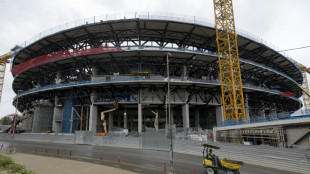
-
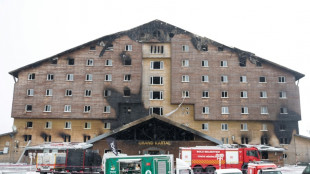 Turkish court jails 11 for life over deadly hotel inferno
Turkish court jails 11 for life over deadly hotel inferno
-
Auger-Aliassime ends Vacherot run to reach Paris Masters semis

-
 Australia captain Wilson denies Wallabies use 'dangerous' breakdown tactics
Australia captain Wilson denies Wallabies use 'dangerous' breakdown tactics
-
'Populists can be beaten': Dutch centrist Jetten claims election win

-
 China's suspension of rare earth controls applies to EU: official
China's suspension of rare earth controls applies to EU: official
-
Italy complains about strong euro, urges ECB to cut rates
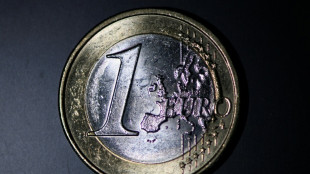
-
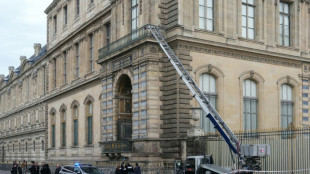 Louvre to get anti-ramming barriers by year end: minister
Louvre to get anti-ramming barriers by year end: minister
-
Wall Street bounces on Amazon, Apple earnings

-
 AI giants turn to massive debt to finance tech race
AI giants turn to massive debt to finance tech race
-
Japan PM says raised 'serious concerns' with Xi on South China Sea, Xinjiang

-
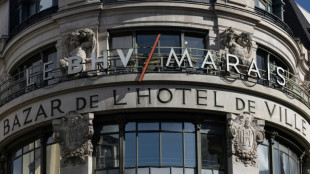 Shein set to open first physical store in Paris
Shein set to open first physical store in Paris
-
Turkish court jails 11 for life over deadly hotel fire
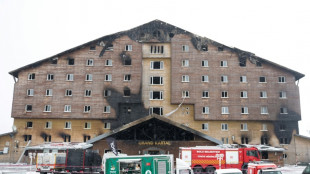
-
 Hazlewood stars as Australia ease past India to win 2nd T20
Hazlewood stars as Australia ease past India to win 2nd T20
-
Stocks extend losses tracking AI, Fed and trade

-
 Arteta concerned for players' welfare in Arsenal fixture pile-up
Arteta concerned for players' welfare in Arsenal fixture pile-up
-
From adored prince to royal outcast, Andrew's protracted downfall
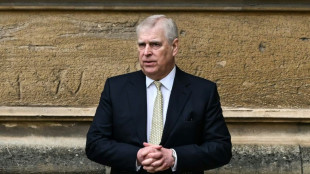
-
 Maresca backs 'stupid' Delap to come good for Chelsea
Maresca backs 'stupid' Delap to come good for Chelsea
-
Pakistan, Afghanistan extend ceasefire, to hold another round of peace talks

-
 Sudan's RSF says arrests fighters accused of abuses in El-Fasher
Sudan's RSF says arrests fighters accused of abuses in El-Fasher
-
Key dates in the fall of Britain's former prince Andrew

-
 Cricket falls silent across Australia after teenager killed by ball
Cricket falls silent across Australia after teenager killed by ball
-
Vinicius Junior in the clear over Clasico outburst

-
 UK welcomes king's move to strip Andrew of royal titles
UK welcomes king's move to strip Andrew of royal titles
-
Liverpool must snap losing 'habit', says under-fire Slot

-
 Bencic out of Hong Kong last eight as tennis injury list mounts
Bencic out of Hong Kong last eight as tennis injury list mounts
-
Xi invites Canada PM to China in first meet in 8 years

-
 Chinese defence minister seeks 'trust' with US but cautions over Taiwan
Chinese defence minister seeks 'trust' with US but cautions over Taiwan
-
India's Rodrigues beat anxiety and tears to become World Cup star

-
 China, Canada leaders hold first formal talks since 2017
China, Canada leaders hold first formal talks since 2017
-
Nvidia to supply 260,000 cutting-edge chips to South Korea


Arid Athens turns to ancient aqueduct as climate crisis bites
Between parked cars in a suburban street in Athens, workers fix a pump to an ancient stone well that in turn accesses an aqueduct built almost 2,000 years ago.
The Greek capital, one of Europe's hottest and most densely populated cities, is going to great lengths -- and depths -- to battle soaring summer temperatures and creaking infrastructure.
Officials are tapping European Union money to help restore access to Hadrian's Aqueduct, a 24-kilometre (15-mile) underground channel named after the Roman emperor who funded its construction in the year 140.
It is hailed by experts as an "engineering marvel".
Last year, public utility company Eydap repeatedly warned Athenians they needed to save drinking water as reserves shrank.
Eydap's Katerina Apostolopoulou, who manages the project in the Chalandri suburb, around 10 kilometres from central Athens, said the water would not be of drinking quality and instead would be used "to clean or to irrigate parks and gardens" in summer.
She pointed out that Athenians would normally need to use the drinking water network for their gardens and parks, so she hoped the new pump would help save the valuable resource.
- War shelter -
The aqueduct, which begins at the foot of Mount Parnitha, is fed by an aquifer, explained geologist Yannis Dafnos.
A gentle slope from the mountain helps the water flow down naturally into the city centre.
The Chalandri well is more than 20 metres deep and part of a network of 300 ancient wells, Dafnos said as he lifted the heavy iron cover.
George Sachinis, Eydap's director of strategy and innovation, called the aqueduct an "archaeological and engineering marvel".
He urged planners to use it to create more green spaces in a city hit hard by the climate crisis.
"It is one of the most important ancient aqueducts in Europe," he said.
The aqueduct helped supply the city for hundreds of years but fell into disuse after the Roman era.
Athenians began to reuse it at the end of the 19th century but it was abandoned again after two dams were constructed near the city.
During the Nazi occupation (1941-1944) and then the ensuing Greek civil war, one of the Chalandri wells that it is now dry was used as a shelter, said Christos Giovanopoulos, who heads Cultural Hidrant, a heritage management project at Chalandri town hall.
The restoration project is part of "the promotion of sustainable development in Athens", he said, adding that water was often wasted.
- 'Collaborates with nature' -
He said the Chalandri project aimed to promote green spaces and improve the microclimate through water recycling, while highlighting the archaeological and cultural importance of the entire monument.
A few years ago, Chalandri residents had to zigzag to avoid the well, which at the time was located in the middle of the street, Giovanopoulos said.
Now, the northern Athens suburb will be the first of eight municipalities in the Athens region to benefit from the reuse of the aqueduct's water.
An adjacent dry well has been fitted with a ladder to allow visitors to descend and view parts of the ancient conduit.
The aqueduct eventually reaches the centre of Athens at the foot of Lycabettus Hill, once the site of a Roman reservoir.
Only a few parts of the original reservoir construction remain. The existing structure with stone columns and arches is largely a reconstruction from the nineteenth century.
At the very bottom, in the ancient canal, "a few parts of the roof built by the Romans to prevent rocks from falling into the aqueduct remain", Sachinis said.
"It is an elegant piece of infrastructure that respects and collaborates perfectly with nature," he said.
"Thanks to this aqueduct, there are plans to create more green space around the original reservoir", he added.
M.Betschart--VB




